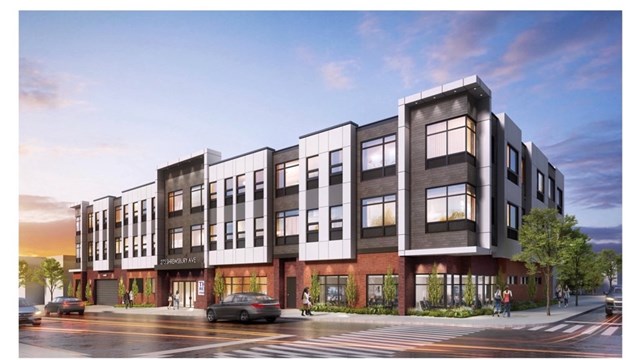
From getting the news, to finding that ultimate BBQ recipe, or just keeping up with friends and relatives both near and far, social media has become entwined in the fabric of our lives. In fact, Facebook, Instagram, and the rest are so ubiquitous, it may come as a surprise to many that in the world of co-ops and condominiums, social media is glaringly absent from communication channels in the majority of residential communities. That’s not to say co-op corporations and condominium associations don’t use web-based technologies to communicate; they do – they’re just not posting and tweeting.
Social Media, Why Not?
Stuart Halper, VP of Impact Realty, a co-op and condo management firm with offices in Manhattan, Queens, Long Island, and Westchester, attributes the absence of social media in residential communities to the tendency for Facebook groups and their ilk to devolve into a soapbox for general grievances – at the expense of just about everything else. “It can be harmful to a co-op or condo,” he says. “You don’t want residents airing their ‘dirty laundry’ in a forum that anyone can see. There’s always the possibility of a begrudged owner or shareholder misusing it. Frankly, board members could misuse it as well.”
Michele Schlossberg, a property manager with Manhattan-based co-op and condominium management firm Gumley Haft and president of her co-op in Park Slope, Brooklyn, agrees. “In co-op communities, people talk to each other,” she says, but social media is another thing all together. “Shareholders ruminating on Facebook or Twitter can get pretty ugly pretty quickly. Misinformation gets disseminated.” The temptation to unload on social media is too great a risk, especially in the rarefied, insular world of a co-op or condo building. Giving residents the opportunity to say online what they wouldn’t say in the hallway could quickly set not just a bad precedent, but could also create a toxic atmosphere among neighbors that could prove very difficult to repair.
So What Is it Good For?
Led Black, a social media consultant based in Upper Manhattan, says he has never encountered a Facebook group for a co-op or condo – but where he has seen it used is in the sales and marketing of co-op and condo units.
“As far as real estate is concerned,” Black says, “social media is a cost-effective way of reaching potential customers. I would advise sales agents, managing agents, and brokers to maintain active social media accounts where they can broadcast their listings – but more importantly, [where they can] also listen to what their customers are looking for via their online comments. I also would advise them to look into advertising on Facebook and Instagram, because you can set your own budget and get very granular with your targeting. A healthy mixture of organic and paid engagement can get more properties sold.” (For a deeper look at how younger buyers are approaching the home-hunting process, check out: https://cooperator.com/article/younger-buyers-new-approaches -Ed.)
Bobby Woofter, a real estate agent in Boston with MyBostonCondo.com, concurs. “Social media leans more towards advertising,” he says. “Condo associations themselves are not looking to hook in new people. When units are for sale, you see social media used by the marketing team. The social media presence for the unit – or for the entire building – isn’t maintained after the property is sold, or after the project is sold out.”
So What Do Co-ops & Condos Use?
Web-based technologies are primarily used by co-op and condo residents, boards and managers for the purpose of notifications and communication about building issues. Good ol’ fashioned email has been the main means of communications for many years, as Halper points out. In addition to regular email, there are web-based applications, such as BuildingLink, which provide an ‘intranet’ of sorts for a building or association that enables everyone to communicate with each other in a completely private, secure forum.
Meryl Sacks, president of Sacks Real Estate Management, a co-op and condominium management firm based in Manhattan, describes BuildingLink as “an information and communication software system. The most heavily used aspect is communication between building residents and management through email, especially emergency notifications through broadcasts, which can be done through email or cell phone.” The key to success for any building when using this technology, Sacks explains, is to have all current contact information for each resident in each apartment.
Schlossberg also uses BuildingLink. She says the four most useful modules in the application for her buildings are e-Blast, which sends out mass messages with the click of a button; the package delivery module, which notifies a resident when a package has arrived and is being held for them; the security module, which adds an additional layer of security through a function called KeyLink that guards spare keys left with the building super; and work orders, which can track not only work being done in the building and in individual apartments, but also potential developing problems like drain clogs appearing in a particular line of apartments that could indicate a larger plumbing issue.
One real life example of how multi-functional management software has improved the operation of a building comes from Ann D., the president of a 56-unit co-op in Upper Manhattan. When she began serving on the board around seven years ago, “We were still carrying around piles of paper and folders to meetings. We were looking for ways to communicate better, and to access documents. For a while we were using Google Drive, and that worked well, but with BuildingLink we have better access, and shareholders can also access documents themselves. If someone needs an alteration agreement, they can access it.” But, she stresses, many still call the managing agent and ask for items they could find themselves online. Ann also mentions that the board members still communicate pretty much through direct email and text.
Of course, for any management software to be successful, residents have to be willing to use it; shiny new technology requires technologically willing participants. They must also be diligent about checking their email, as so many of the notices and communications on that system are sent electronically. If you don’t check, you don’t get the notice. All of our experts indicate that they still send out paper notifications under apartment doors as a backup, although with BuildingLink one can select out those residents that haven’t received their notification via the service and deliver paper notifications to those units only.
Other technologies used by residents in both co-ops and condos (and rental buildings, too) relate more to phone-based applications for things like answering the intercom, setting heat and A/C temperatures, and package delivery in buildings without door staff. While these applications are popular, they definitely don’t qualify as social media.
A Future for Multifamily Social Media?
The future of social media in co-op and condo buildings is a question mark. As Ann, the president of the Upper Manhattan co-op asks, “Who’s following it?” Schlossberg doubts that it’s likely to become embedded in community lifestyles. What information would be shared there – aside from the aforementioned gripes and axes to grind? “When people come home from work, they’re tired. They may want to check their own social media accounts, but I doubt they want to join a discussion online about the new scratch on the wood in the elevator and how it got there,” she says.
On the other hand, just because something isn’t ‘A Thing’ at the current cultural moment doesn’t mean that it won’t gain traction as time goes on and new residents move into multifamily communities. As younger owners, particularly millennials, enter co-op and condominium buildings, will they find a way to adapt their already considerable social media habits to the lives of their buildings? Woofter thinks so. He suggests that the first place where social media may show up in the life of residential real estate outside of sales and marketing is in new, ultra-luxury buildings with very young populations. From there it might spread to co-op and condo communities.
But that’s still a ways off; with many young professionals putting off homebuying thanks to crushing student loan debt burdens, whether or not a condo association has a Facebook page or Instagram account is pretty far down the list of priorities for both current and would-be residents. In the meantime, keep checking under your door for those notifications, because you won’t likely be receiving a tweet about the Summer’s Over BBQ on the roof this Saturday.
A J Sidransky is a staff writer for The Cooperator and a published novelist.









Leave a Comment